
The Cessna 208 Caravan is a utility aircraft produced by Cessna. The project was commenced on November 20, 1981, and the prototype first flew on December 9, 1982. The production model was certified by the FAA in October 1984 and its Cargomaster freighter variant was developed for FedEx. The 4 ft (1.2 m) longer 208B Super Cargomaster first flew in 1986 and was developed into the passenger 208B Grand Caravan.
The ACME Anser was an amphibious twin-jet utility aircraft that was developed in the United States by Air Craft Marine Engineering in 1958. The project was cancelled before the prototype was complete.
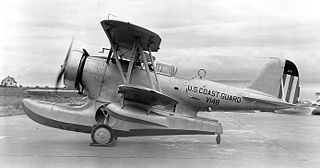
The Grumman JF "Duck" was an American single-engine amphibious biplane built by Grumman for the United States Navy during the 1930s. The J2F Duck was an improved version of the JF, with its main difference being a longer float.
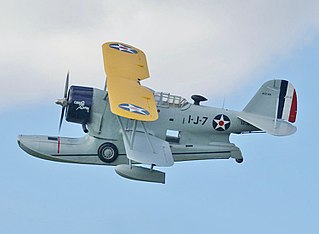
The Grumman J2F Duck is an American single-engine amphibious biplane. It was used by each major branch of the U.S. armed forces from the mid-1930s until just after World War II, primarily for utility and air-sea rescue duties. It was also used by the Argentine Navy, who took delivery of their first example in 1937. After the war, J2F Ducks saw service with independent civilian operators, as well as the armed forces of Colombia and Mexico.

The Boeing Model 200 Monomail was an American mail plane of the early 1930s.

The Piper PA-11 Cub Special is a later-production variant of the J-3 Cub manufactured by Piper Aircraft.

The Cessna Airmaster, is a family of single-engined aircraft manufactured by the Cessna Aircraft Company. The Airmaster played an important role in the revitalization of Cessna in the 1930s after the crash of the aviation industry during the Great Depression.

The Douglas C-1 was a cargo/transport aircraft produced by the Douglas Aircraft Corporation for the United States Army Air Service starting in 1925.

The Curtiss T-32 Condor II was a 1930s American biplane airliner and bomber aircraft built by the Curtiss Aeroplane and Motor Company. It was used by the United States Army Air Corps as an executive transport.

The Loening OL, also known as the Loening Amphibian, was an American two-seat amphibious biplane designed by Grover Loening and built by Loening for the United States Army Air Corps and the United States Navy.
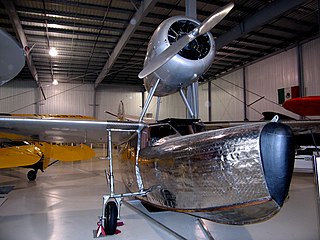
The Fleetwings Sea Bird was an American-built amphibious aircraft of the 1930s.

The Fokker F-11 was a luxury flying boat produced as an 'air yacht' in the United States in the late 1920s. Technically the aircraft was the Fokker Aircraft Corporation of America's Model 9. It was sold in North America as the Fokker F-11 and was offered in Europe as the Fokker B.IV. By the time the first six aircraft had been constructed, it was already evident that the design was not going to sell well. A few were sold, two to notable multi-millionaires; Harold Vanderbilt and Garfield Wood each purchasing one. One was bought by Air Ferries in San Francisco. The F-11A cost $40,000 but the price was slashed to $32,500 as the depression set in during 1930. The F-11 was a commercial failure.
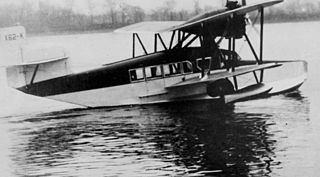
The Loening C-4C, later the Keystone-Loening K-85 Air Yacht following the merger of the Loening and Keystone companies, was an amphibious utility biplane built in the United States in the late 1920s. It was developed by Grover Loening from the C-1 that he had created together with Leroy Grumman, incorporating a new fuselage design. This departed from the characteristic Loening design feature of having a slender, "shoehorn" float projecting from the underside of the fuselage with an engine mounted tractor-fashion above it. Instead, the C-4C had a conventional flying-boat hull, with an enclosed cabin for passengers. The engine was mounted in a separate nacelle on the leading edge of the upper wing.

The Loening C-2 Air Yacht was an amphibious airliner produced in the United States at the end of the 1920s, developed from the OL observation aircraft the firm was producing for the US military.

The Loening S-1 Flying Yacht, also called the Loening Model 23, was an early light monoplane flying boat designed in the United States by Grover Loening in the early 1920s. The aircraft won the 1921 Collier Trophy.
The Fairey Fremantle was a large single-engine biplane seaplane designed in the mid-1920s for a proposed around-the-world flight. Only one was built.

The Hamilton H-45 and H-47 were six-passenger-seat, all-metal, high-wing monoplanes powered by single Pratt & Whitney radial engines. They were built for passenger and mail-carrying work in the US in the late 1920s.
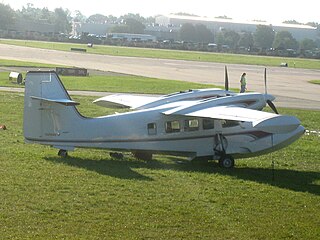
The Ellison-Mahon Gweduck or Geoduck is an American twin-engine amphibious aircraft, built from composites to resemble the Grumman Widgeon.
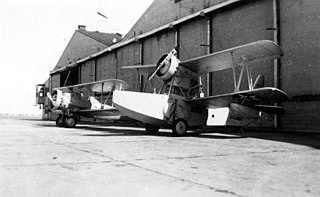
The Loening XS2L was an American biplane scout amphibian developed by Keystone-Loening, for the United States Navy during the early 1930s.
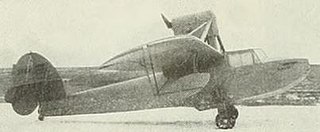
The Argonaut Pirate was a 1930s, U.S., three place, single-engined pusher configuration amphibious aircraft. Only two were built.


















